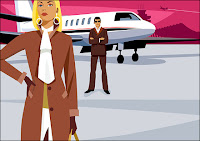Wednesday, August 19, 2009
Thursday, March 12, 2009
Sato Travel, Sato Travel Deals, Sato Travel Agency

Sato Travel
So what to do? Look through your camera. The viewfinder does not lie (usually). Try to see what you are looking at as the finished picture. Most people perfunctorily take pictures, hoping that somehow the shot will come out great. If you wonder how the pictures came out when you are on the way to the drug store to get them, you're doing something wrong. At the moment you click the pic, you should know exactly what you will get. (Of course with digital, that's not a trick!).
Now, I was a tad dishonest in saying that you can't capture all of the elements of a scene. You can hint at them. For starters, motion. Yes, even in a still picture, there is motion. Something happened before, during and after your picture. In a mountain vista scene, you may find something that hints at motion, whether it be a branch of a tree that has been swaying in the breeze, or a river flowing through the valley below. These add a sense of motion.
Then there's the "rule of thirds." When you place the main object of the picture smack-dab in the middle, it is static and boring. Place it one third of the way from either side, and you IMPLY motion. Put the horizon in a landscape photo a third of the way up or down, not across the middle.
Remember, when a person looks at a picture, their eyes move. You want to frame your photo to help that movement. If you can find some lines in the scene, such as a skyline, cloud formation, path through the forest, etcetera, use it interestingly, and with the rule of thirds to draw your viewer's eyes into the picture.
Avoid "summit syndrome." You get to the top of Mount Washington and shoot the majestic vista. Great. The pictures come out ... boring! How? No PERSPECTIVE. Big vistas will be flat unless you have an object in the foreground, such as a rock or a tree, to give them perspective. Then the eye really grasps how big this scene is. People enjoying the view is a real winner, because the viewer may identify with their emotions, giving the image real impact.
Cheese! Yes, you do have to take the family photos. It's obligatory. But when you do, make sure that they show the LOCATION of the photo. Otherwise, you might as well do it on your driveway. Frame the scene in context, with landmarks as part of the picture. Find a way to tell as story in the picture, such as little Sara climbing up the rocks by the waterfall.

Finally, any element in the picture that hints at more senses than just the visual will make it remarkable. Actor headshots for example, tell a story about the subject. You can almost hear them saying their next lines. If you photograph a garden, the viewer may experience the aroma of the flowers. A tourist street with an accordion player on the corner may have your amazed friends whistling "Dixie."
In summation, picture taking on travel is recording the experience in a satisfying way. Use motion, perspective, sensory, storytelling and so forth, to bring your photos to life. Oh, and needless to say, make your job easy and go to great places! See you at the overlook!
Subscribe to:
Posts (Atom)